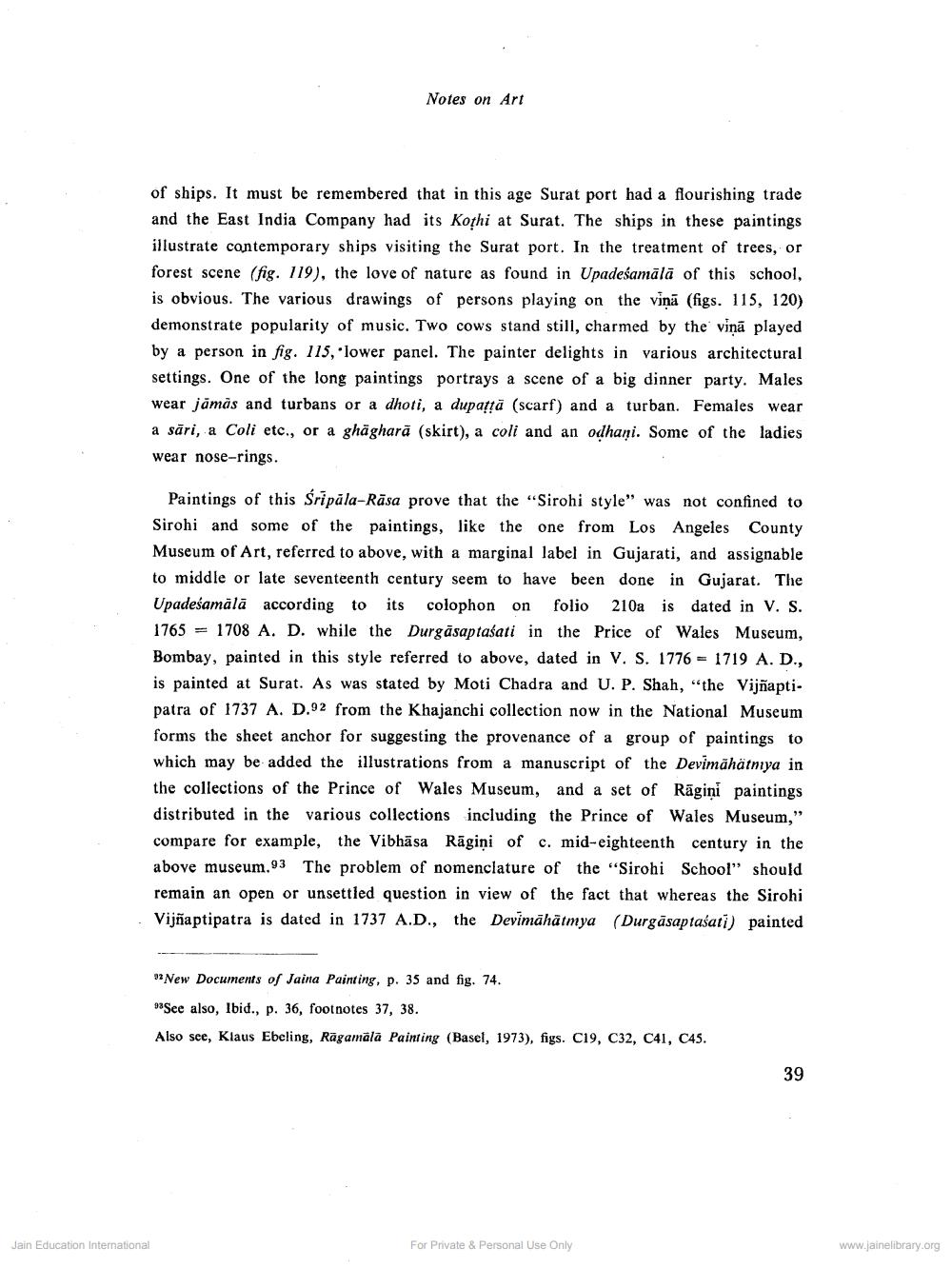________________
Notes on Art
of ships. It must be remembered that in this age Surat port had a flourishing trade and the East India Company had its Kothi at Surat. The ships in these paintings illustrate contemporary ships visiting the Surat port. In the treatment of trees, or forest scene (fig. 119), the love of nature as found in Upadeśamālā of this school, is obvious. The various drawings of persons playing on the viņa (figs. 115, 120) demonstrate popularity of music. Two cows stand still, charmed by the viņa played by a person in fig. 115, lower panel. The painter delights in various architectural settings. One of the long paintings portrays a scene of a big dinner party. Males wear jāmās and turbans or a dhoti, a dupatta (scarf) and a turban. Females wear a sări, a Coli etc., or a ghagharā (skirt), a coli and an odhani. Some of the ladies wear nose-rings.
Jain Education International
Paintings of this Śripāla-Rasa prove that the "Sirohi style" was not confined to Sirohi and some of the paintings, like the one from Los Angeles County Museum of Art, referred to above, with a marginal label in Gujarati, and assignable to middle or late seventeenth century seem to have been done in Gujarat. The Upadeśamälä according to its colophon on folio 210a is dated in V. S. 1765 1708 A. D. while the Durgāsaptasati in the Price of Wales Museum, Bombay, painted in this style referred to above, dated in V. S. 1776 1719 A. D., is painted at Surat. As was stated by Moti Chadra and U. P. Shah, "the Vijñaptipatra of 1737 A. D.92 from the Khajanchi collection now in the National Museum forms the sheet anchor for suggesting the provenance of a group of paintings to which may be added the illustrations from a manuscript of the Devimähätmya in the collections of the Prince of Wales Museum, and a set of Ragini paintings distributed in the various collections including the Prince of Wales Museum," compare for example, the Vibhasa Ragini of c. mid-eighteenth century in the above museum.93 The problem of nomenclature of the "Sirohi School" should remain an open or unsettled question in view of the fact that whereas the Sirohi Vijñaptipatra is dated in 1737 A.D., the Derimähätmya (Durgasaptalati) painted
92 New Documents of Jaina Painting, p. 35 and fig. 74.
93See also, Ibid., p. 36, footnotes 37, 38.
Also see, Klaus Ebeling, Ragamala Painting (Basel, 1973), figs. C19, C32, C41, C45.
For Private & Personal Use Only
39
www.jainelibrary.org




